Mount Zion
Mount Zion is hill just to the south of the Old City walls in Jerusalem. Suleiman the Magnificent (who built the existing old city walls in the 16th century) reputedly had the two architects of the wall executed because they did not include Mount Zion. A Mount Zion is mentioned in 2 Samuel, 1/2 Kings and 1/2 Chronicles, although whether this is the same geographical location has been questioned. Regardless it is home to a number of traditional holy sites.
King David was buried in "The City of David" (1 Kings 2:10) and medieval pilgrims placed the Tomb of David on what is today called Mount Zion, although contemporary archeology hints that the actual burial location may be further east. Nevertheless, this is still the sanctified site and it is marked with a cenotaph (stone marker) draped with a velvet cloth. There are separate men's and women's entrances to view the cenotaph, and you have to negotiate your way around a lot of Jewish folks saying prayers.
The second site is the Cenacle or Coenaculum, a 14th century room directly above the Tomb of David that is traditionally identified as the geographic location of the Upper Room, the place where Jesus had his final Passover meal, the last supper (Mark 14). It is also identified as the site where Jesus' disciples were "filled with the Holy Spirit" seven weeks after Jesus' crucification (Acts 2). The Arabic inscriptions in the stained glass windows call attention to an interfaith veneration of the location as the traditional burial place of prophet David.
Mount Zion is also the location of Hagia Maria Sion Abbey, a Benedictine abbey formerly known as the Abbey of the Dormition of the Virgin Mary. The church itself is known as the Basilica of the Assumption and celebrates a local tradition that marks this location as the place where Jesus' mother passed into eternity.
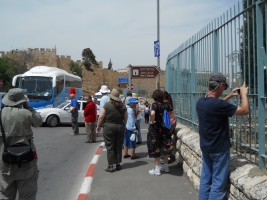
Disembarking

Gardening rehab project sign
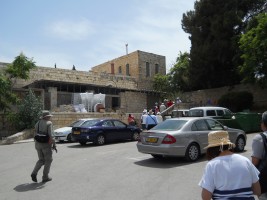
Stairway
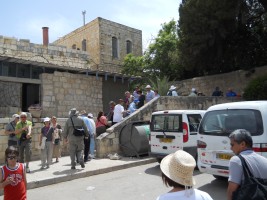
Stairway

Pathway
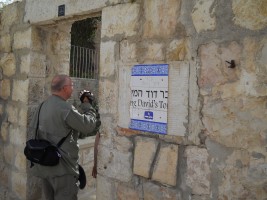
King David's Tomb entrance sign
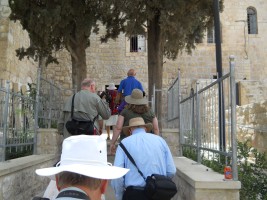
Stairway
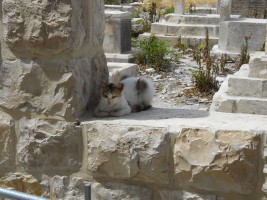
Cat

Entrance
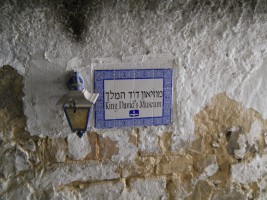
King David's Museum sign

Shrine
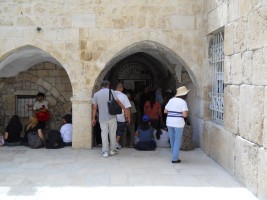
Tomb entrance
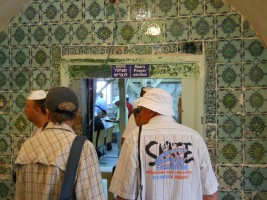
Men's prayer section
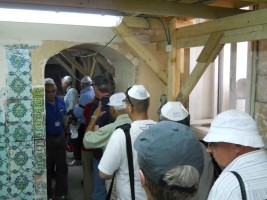
Men's line
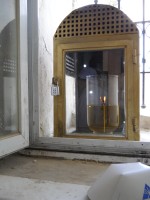
Oil lamp
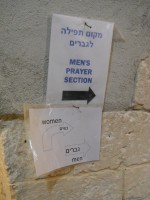
Signs
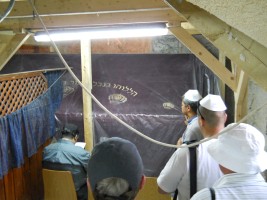
Tomb centotaph
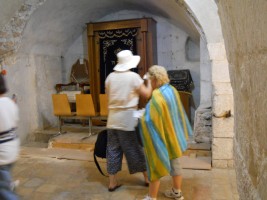
Women's section
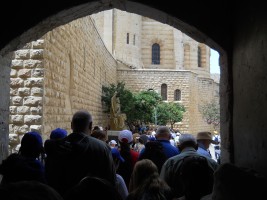
King David statue
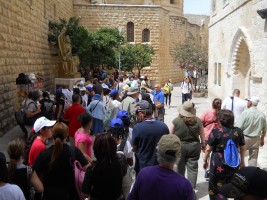
Courtyard
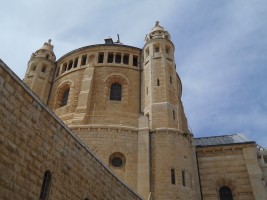
Hagia Maria Sion Abbey
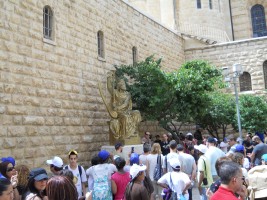
King David statue
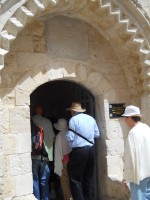
Room of the Last Supper entrance
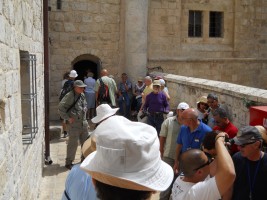
Room of the Last Supper entrance
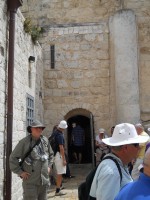
Room of the Last Supper entrance
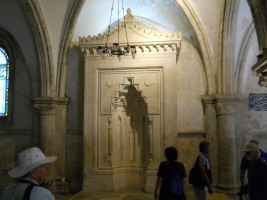
The upper room
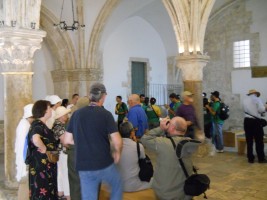
The upper room
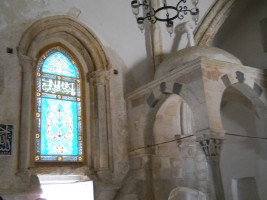
Muslim stained glass windows
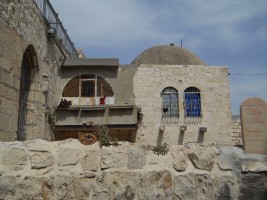
Sacred vs profane

Entrance
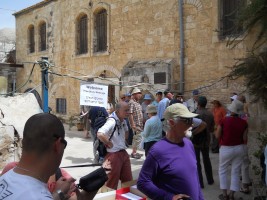
Courtyard

Courtyard
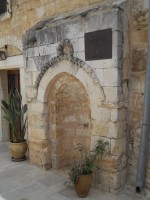
Unused fountain alcove
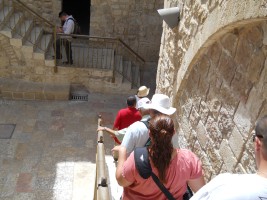
Descending

Artist
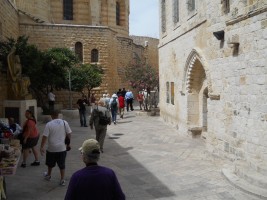
Pathway
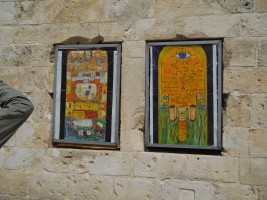
Art
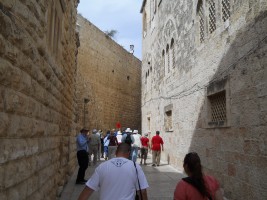
Path along old city wall
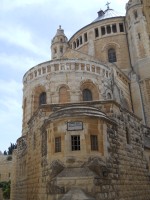
Hagia Maria Sion Abbey

Back to the bus

Zion Gate
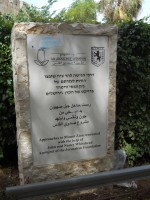
Renovation credit sign
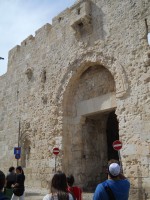
Zion Gate

Zion Gate